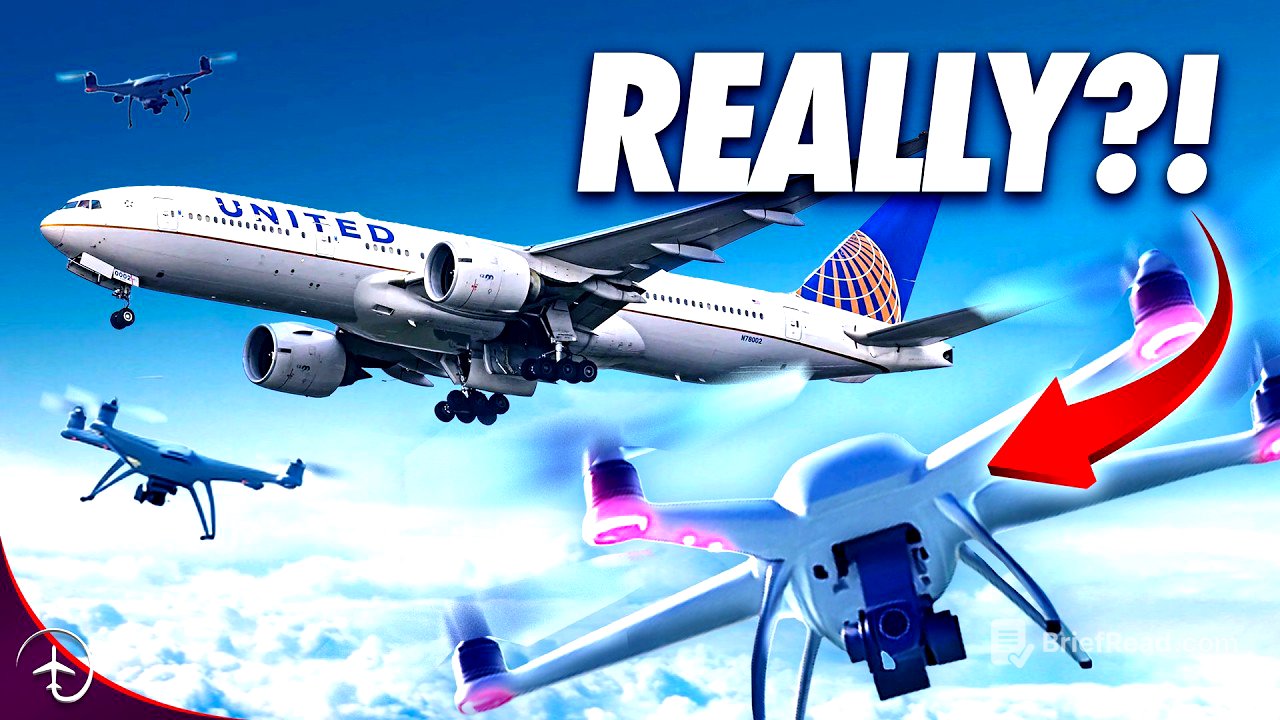TLDR;
This video discusses the growing use of drones and their impact on aviation. It highlights the potential benefits of drones, such as their use in firefighting, search and rescue, and airport operations, while also addressing the risks they pose, including collisions with aircraft and disruptions to airspace. The video provides an overview of the current drone regulations, the efforts to track and identify drones, and the potential consequences for irresponsible drone use. It emphasizes the need to balance the benefits of drones with responsible and safe operation to avoid further restrictions that could limit their potential.
- Drones can be a force for good in aviation, but their misuse can also cause significant problems
- Drone collisions with aircraft, especially low-flying firefighting planes, can lead to damage and disruptions
- Regulations and technologies are being developed to better track and identify drones, but enforcement remains a challenge
- Responsible drone use is crucial to avoid further restrictions that could limit the potential benefits of this technology
The Risks and Benefits of Drones in Aviation [0:00]
The video begins by discussing the growing number of drones in use, both commercially and recreationally, and how they have caused issues like airspace closures and collisions with aircraft. It then provides an overview of the firefighting aircraft used to combat wildfires, the CL-415 "Super Scooper," and how these planes are particularly vulnerable to drone strikes due to their low-altitude operations.
The video then delves into the specifics of a drone collision incident in Los Angeles, where a CL-415 firefighting plane was hit by a drone, causing significant damage to the aircraft. This incident led to the grounding of all firefighting aircraft, disrupting the firefighting efforts. The video explains the potential consequences of such collisions, including engine damage or shutdown, and the higher risk posed by drones compared to bird strikes.
The video then presents data on the scale of the drone problem, with over 373 drone sightings near airports in a three-month period, and the relatively small number of actual collisions or close calls reported so far. However, it emphasizes that even close calls can lead to significant disruptions, as seen in the Gatwick Airport closure in 2018 due to drone sightings.
Tracking and Regulating Drones [14:18]
The video then discusses the efforts to address the drone problem, including the implementation of Remote ID technology, which allows drones to transmit their identification, location, and altitude information. It also mentions the use of radar and radio frequency tracking to detect and identify non-compliant drones.
The video highlights the penalties for irresponsible drone use, including fines of up to $75,000 and 12 months in prison in the United States. It emphasizes that these penalties are being enforced, with over $340,000 in fines levied against 27 individuals between 2022 and 2024.
The Potential Benefits of Drones in Aviation [17:04]
Despite the risks, the video also explores the potential benefits of drones in the aviation industry. It discusses how drones can be used in firefighting operations to track fires, detect hotspots, and carry water hoses to high-rise buildings. Drones can also be used for airport security, runway and taxiway inspections, and external aircraft inspections, potentially improving efficiency and safety.
The video also mentions other innovative uses of drones, such as in search and rescue operations and the delivery of medical supplies. It emphasizes that the drone market is growing rapidly and that the technology has the potential to bring significant benefits to the aviation industry, if used responsibly.
Conclusion
The video concludes by emphasizing the need for responsible drone use to avoid further restrictions that could limit the potential benefits of this technology. It encourages viewers to provide their thoughts and ideas on how drones can be used in the aviation industry, while also stressing the importance of following existing rules and regulations to ensure the safe integration of drones into the airspace.









